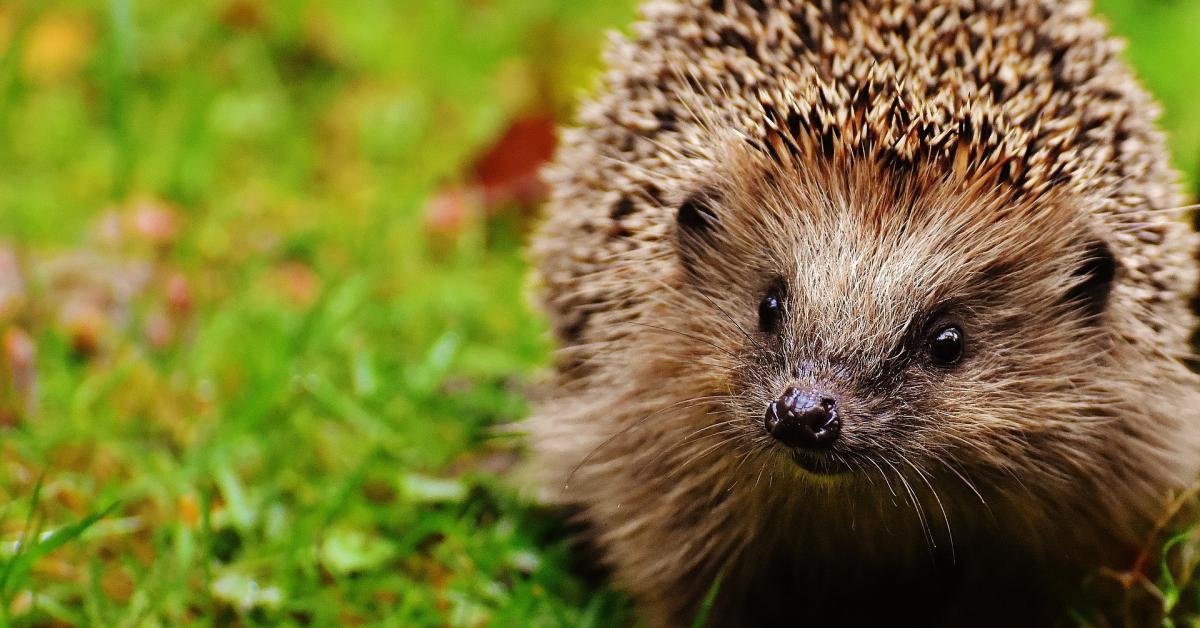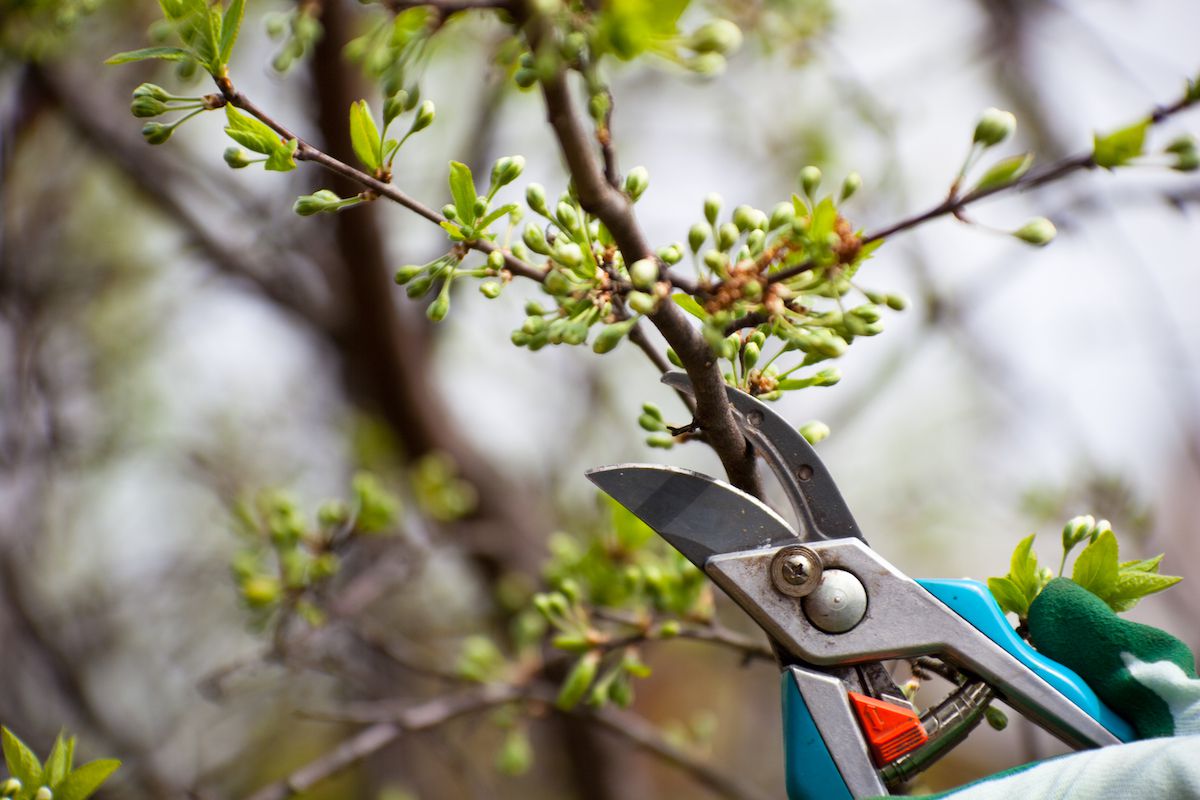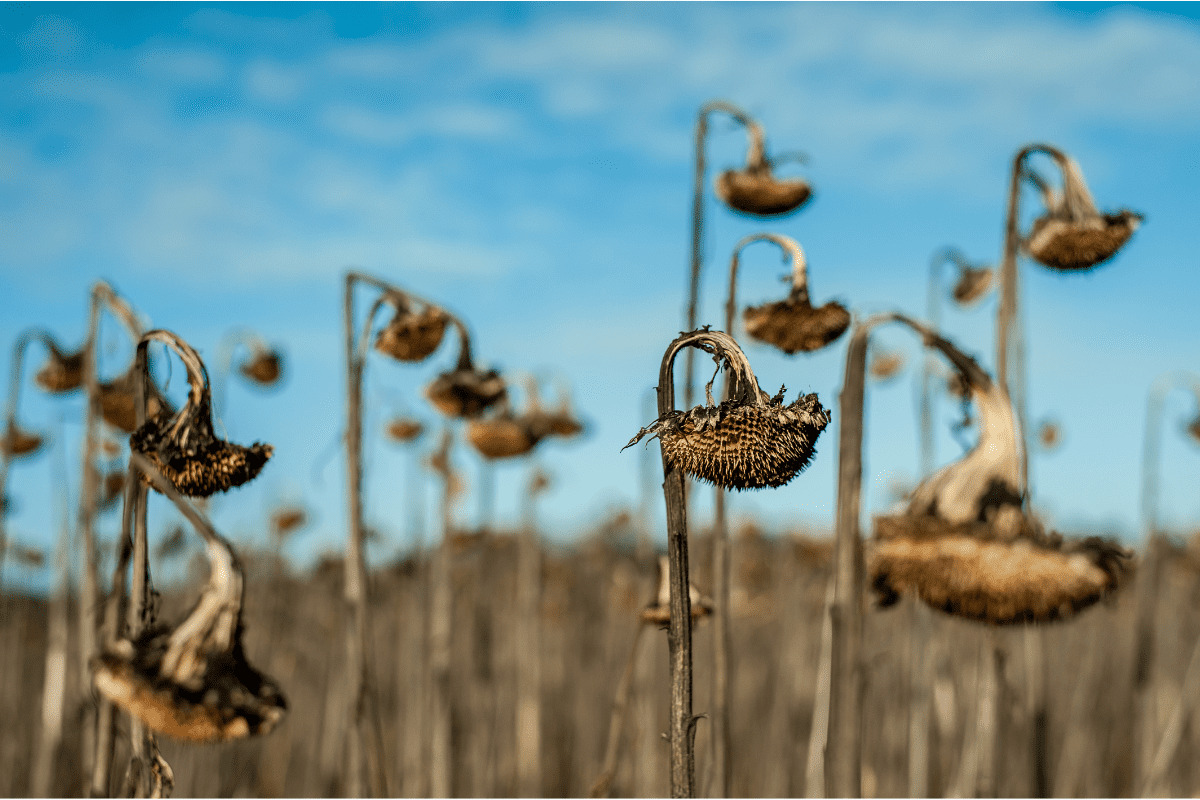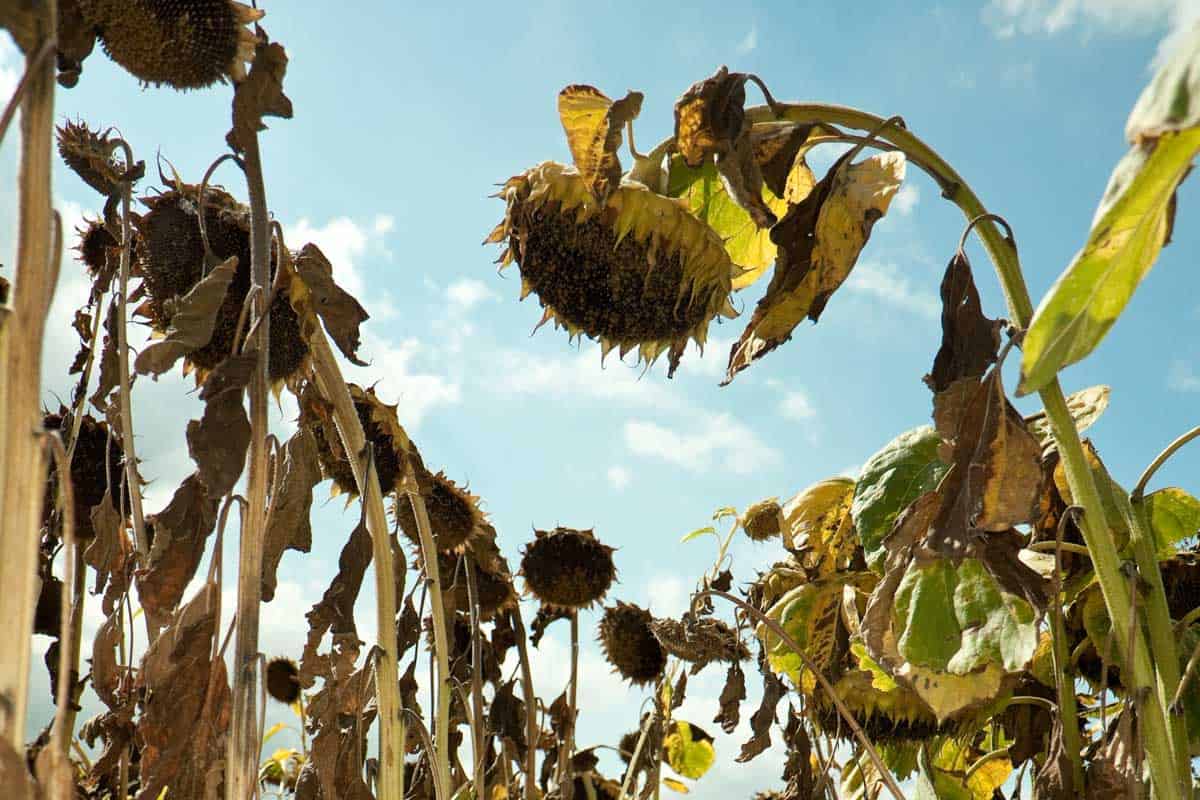Home>Gardening News and Trends>Latest News>What Insects Die After Mating
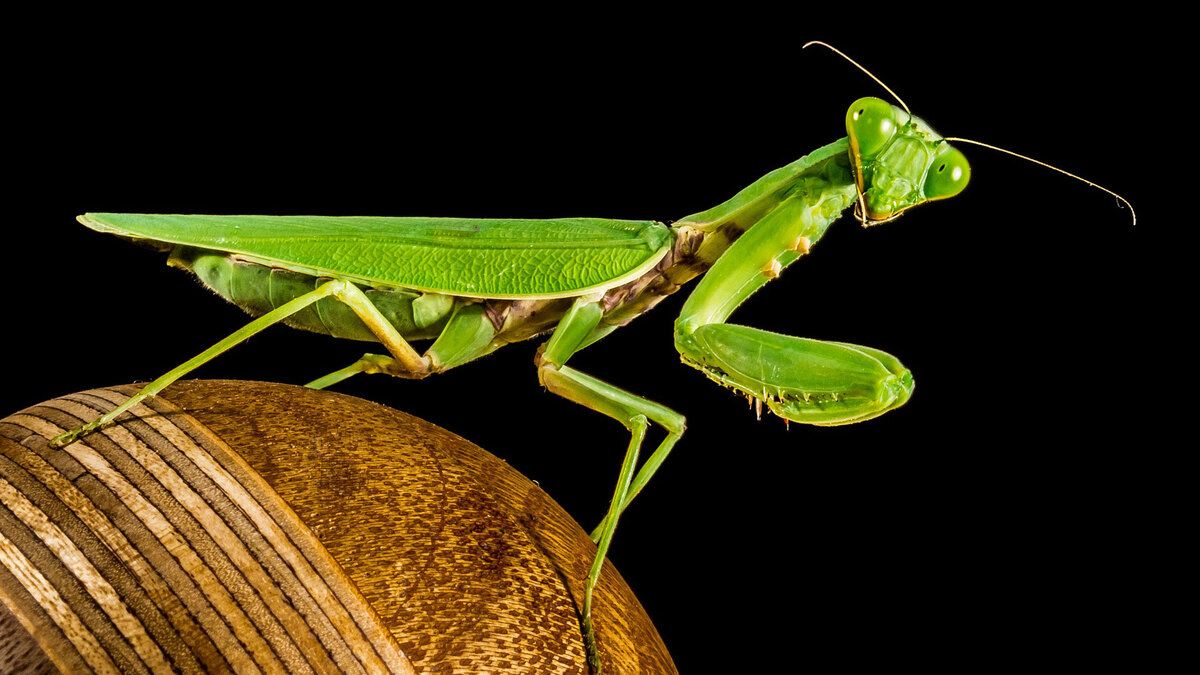

Latest News
What Insects Die After Mating
Published: December 4, 2023
Get the Latest News on What Insects Die After Mating. Discover fascinating insights into the mating habits of various insects and the consequences it has on their lifespan.
(Many of the links in this article redirect to a specific reviewed product. Your purchase of these products through affiliate links helps to generate commission for Chicagolandgardening.com, at no extra cost. Learn more)
Table of Contents
- Introduction
- Why do some insects die after mating?
- Examples of insects that die after mating
- Ecological significance of death after mating in insects
- Evolutionary theories behind death after mating
- Reproductive strategies of insects that die after mating
- Factors influencing the likelihood of death after mating in insects
- Exceptions to the rule: Insects that do not die after mating
- Conclusion
Introduction
In the world of insects, reproduction is a fascinating and complex process. While many species of insects have the ability to mate multiple times and live for an extended period, there are some peculiarities in the insect world: certain insects die shortly after mating. This phenomenon, known as post-mating death, is intriguing and raises many questions about why it occurs.
The concept of post-mating death in insects has long intrigued scientists and researchers. It goes against the common understanding that the primary goal of every living organism is to survive and reproduce. However, in some cases, reproductive success comes at the cost of an individual’s life.
Post-mating death occurs in various insect species, including butterflies, dragonflies, honeybees, and praying mantises. These insects exhibit interesting behaviors and physiological changes leading to their eventual demise after mating. Understanding the reasons behind this phenomenon can shed light on the complex processes and strategies involved in reproduction.
This article explores the reasons behind post-mating death in insects, discussing both the ecological significance and the evolutionary theories that may explain this phenomenon. We will also delve into the reproductive strategies of insects that experience post-mating death, as well as the factors that influence the likelihood of this outcome. Additionally, we will explore any exceptions to the rule, looking at insects that do not die after mating.
By examining post-mating death in insects, we can gain a deeper understanding of the intricate ways in which organisms adapt and evolve to ensure the survival and propagation of their species. So, let us dive into the captivating world of insects and discover the secrets behind their peculiar reproductive behaviors.
Why do some insects die after mating?
The phenomenon of insects dying after mating may seem counterintuitive, as it goes against the survival instinct that drives most living organisms. However, there are several reasons why some insects have evolved to sacrifice their lives post-mating.
One prominent reason is related to the high energy expenditure and physical stress associated with mating. Insects engage in elaborate courtship rituals and intense copulation, which can be physically demanding and exhausting. The process of mating often involves aggressive competition among males and can result in physical harm to individuals. Additionally, the transfer of sperm and spermatophores places a significant strain on an insect’s energy reserves.
Another factor contributing to post-mating death is the trade-off between reproductive success and longevity. By sacrificing their lives, insects can increase their chances of passing on their genes to the next generation. This is particularly advantageous if an individual’s lifespan post-mating is limited, as it allows them to maximize their reproductive output in the limited time available.
In some cases, post-mating death is a result of reproductive senescence. Insects have a finite reproductive capacity, where the quality and quantity of their gametes gradually decline with age. By dying shortly after mating, insects eliminate the possibility of mating with subpar gametes and ensure that their offspring have the best chance of survival and reproductive success.
Furthermore, post-mating death can prevent mating interference and ensure progeny viability. In many insect species, female reproductive tracts are complex and can store sperm from multiple males. By dying after mating, a male insect eliminates the possibility of another male mating with the same female and potentially diluting their genetic contribution. This ensures that his genes have a higher chance of being passed on to future generations.
Interestingly, some researchers have suggested that post-mating death may also serve as a form of parental care. In certain insects, such as bees and ants, male drones die shortly after mating, leaving behind females responsible for colony maintenance and caring for the offspring. This sacrifice ensures the survival of the colony and increases the chances of the male’s genetic lineage thriving.
In summary, the reasons behind post-mating death in insects are multifaceted and interconnected. It is a trade-off between the immediate benefits of reproductive success and the long-term costs of survival. By sacrificing their lives, insects can maximize their chances of passing on their genetic material, enhance reproductive success, prevent mating interference, and even contribute to the welfare of their offspring or colony.
Examples of insects that die after mating
Post-mating death is observed in various insect species, showcasing the diversity and complexity of reproductive strategies in the insect world. Here are a few examples of insects that undergo post-mating death:
1. Honeybees (Apis mellifera): Honeybees are well-known for their elaborate social structure. Male honeybees, called drones, mate with the queen bee during a single mating flight. After mating, the drone’s abdomen ruptures, resulting in its death. This sacrifice ensures that the queen receives a sufficient amount of sperm for future egg-laying and minimizes the competition among drones within the colony.
2. Praying Mantises (Mantis spp.): Praying mantises are infamous for their cannibalistic mating behavior. Male mantises carefully approach the female to avoid being attacked. During mating, the female often devours the male’s head, providing her with nutrition necessary for egg development. The male will continue to copulate even after losing his head. However, once the mating is complete, he dies, ensuring the continuation of the female’s nourishment.
3. Mayflies (Order Ephemeroptera): Mayflies have one of the shortest adult lifespans among insects, ranging from a few hours to a few days. During their brief adult stage, adult mayflies mate, and females lay eggs in bodies of water. After mating, the adult mayflies succumb to natural causes or exhaustion, completing their life cycle and allowing the next generation to thrive.
4. Glowworms (Lampyridae): Glowworms are bioluminescent insects that use their light-producing organs to attract mates. After mating, female glowworms lay eggs, while the males typically die shortly after mating. This phenomenon ensures the female’s reproductive success and may help minimize competition among males for resources or breeding territories.
5. Fireflies (Family Lampyridae): Similar to glowworms, male fireflies put on a stunning light show to attract female mates. Once they find a receptive female, mating takes place, after which the male usually dies. The flashing pattern of fireflies’ bioluminescent signals plays a crucial role in attracting and identifying suitable mates, ensuring successful reproduction before the male’s demise.
These are just a few examples of insects that undergo post-mating death. The diverse range of behaviors and physiological changes observed across different insect species highlights the intricate adaptations and strategies employed by these organisms to ensure reproductive success, even at the cost of their own lives.
Ecological significance of death after mating in insects
The phenomenon of post-mating death in insects holds significant ecological implications and plays a crucial role in shaping insect populations and communities. Understanding this phenomenon allows us to appreciate the intricate balance and dynamics within ecosystems. Here are some of the ecological significances of death after mating in insects:
1. Reproductive resource allocation: Post-mating death ensures efficient allocation of reproductive resources. By sacrificing their lives after mating, insects ensure that their limited energy and resources are utilized exclusively for reproduction rather than for survival. This allocation maximizes the chances of successful fertilization, enhancing the population’s reproductive output.
2. Genetic diversity: The death of male insects after mating can enhance genetic diversity within populations. When multiple males mate with a female, the competition among the sperm ensures that a variety of genetic material is passed on to the offspring. This diversity can provide a greater evolutionary advantage, increasing the adaptability and resilience of the population to changing environmental conditions.
3. Sexual selection: Post-mating death in insects can enhance sexual selection by reducing the number of available mates for both sexes. This intensified competition for mates enforces selective pressures, leading to the evolution of elaborate courtship behaviors, physical traits, and physiological adaptations. These mechanisms ultimately contribute to the diversity of insect species and the maintenance of strong reproductive barriers between closely related species.
4. Predator-prey dynamics: Post-mating death can influence predator-prey dynamics by providing a temporally distinct and concentrated source of food for predators. For example, mayflies, which die shortly after mating, serve as a vital food source for aquatic predators, such as fish and birds. In turn, the predation pressure exerted by these predators can shape the abundance and distribution of both predator and prey populations.
5. Nutrient recycling: The bodies of insects that die after mating contribute to nutrient cycling within ecosystems. These remains serve as a source of organic matter and nutrients for decomposers, such as bacteria, fungi, and detritivores. This recycling of nutrients ensures the sustainability and productivity of ecosystems, contributing to the overall balance and functioning of the food web.
Overall, the ecological significance of death after mating in insects extends beyond the individual’s reproductive success. It affects population dynamics, genetic diversity, sexual selection, predator-prey interactions, and nutrient cycling. By sacrificing their lives after mating, insects play a vital role in shaping ecosystems and maintaining the delicate balance of nature.
Evolutionary theories behind death after mating
The phenomenon of post-mating death in insects has intrigued scientists for decades, leading to the development of various evolutionary theories attempting to explain this puzzling behavior. While not all theories apply to every species, they provide valuable insights into the adaptive significance of death after mating. Here are some of the evolutionary theories behind this phenomenon:
1. Bet-hedging strategy: The bet-hedging theory suggests that post-mating death acts as a risk-spreading strategy to maximize reproductive success. By sacrificing their lives after mating, insects increase the chance of their genetic material being successfully passed on even if environmental conditions deteriorate or the offspring are at a disadvantage. This strategy balances the risk of offspring survival against the immediate reproductive gain.
2. Sperm competition and sexual selection: Post-mating death is often associated with intense sperm competition among males of certain insect species. When multiple males mate with a female, the males’ premature death prevents further mating and ensures that their sperm has a competitive advantage in fertilization. This behavior enhances sexual selection, driving the evolution of traits that increase male reproductive success.
3. Parental investment: In species where males die after mating, this behavior can be seen as a form of parental investment. By sacrificing their lives, males allocate their energy and resources towards female reproduction and offspring survival. This increased investment can lead to higher offspring quality, viability, and chances of successful reproduction.
4. Reinforcing monogamy: In species where females can store sperm and mate with multiple males, post-mating death in males may serve as a strategy to reinforce monogamy. By dying shortly after mating, males prevent females from remating, reducing the likelihood of their offspring being outcompeted by the sperm of other males.
5. Enhanced fitness: The evolutionary theory behind post-mating death suggests that this behavior evolved because individuals that died after mating were able to produce more offspring with a higher chance of survival. Through sacrificing their own survival, these individuals were able to maximize their fitness by prioritizing reproductive success over individual lifespan.
6. Avoiding resource competition: In some insects, post-mating death prevents competition for limited resources, such as food or habitat, among individuals within the same population. By removing themselves from the population after mating, these insects reduce intraspecific competition and increase the availability of resources for the offspring, increasing their chances of survival.
These evolutionary theories provide potential explanations for why certain insect species exhibit post-mating death. However, it’s important to note that the specific reasons can vary among different insect groups and depend on the ecological and reproductive context in which they evolved.
Reproductive strategies of insects that die after mating
Insects that die after mating employ various reproductive strategies to ensure the success and propagation of their species. These strategies have evolved to optimize the transmission of genetic material and increase the likelihood of offspring survival. Here are some prominent reproductive strategies observed in insects that experience post-mating death:
1. Quick and intense courtship: Insects that die after mating often engage in rapid and intense courtship rituals. This behavior allows them to locate potential mates efficiently and maximize their chances of successful copulation. These courtship behaviors may involve visual displays, pheromone release, or elaborate movements to attract and entice a mate.
2. Sperm manipulation: Some insects that experience post-mating death employ sperm manipulation strategies to ensure their genetic material is preferred or preserved within the female reproductive tract. This can include displacing or incapacitating previously deposited sperm from other males, or producing substances that inhibit or destroy rival sperm. These mechanisms increase the probability of their sperm successfully fertilizing the eggs.
3. Increased investment in spermatogenesis: Insects that die after mating often invest significant resources in spermatogenesis, the production of sperm. This investment ensures that they have a high-quality and abundant supply of sperm available for mating. They may allocate more energy towards sperm production, resulting in larger testes or increased sperm counts.
4. Seminal gifts or nuptial gifts: Some insects provide the female with valuable resources or nutrients during mating as a form of parental investment. These gifts, known as seminal or nuptial gifts, can range from nutrient-rich spermatophores to specialized secretions or body parts. By providing these gifts, males enhance the female’s reproductive potential and increase the chances of successful fertilization and offspring survival.
5. Mating plug or copulatory guards: Insects that die after mating may employ physical mechanisms to prevent or limit future insemination by other males. This can involve the deposition of a mating plug or the use of copulatory guards to physically block the female reproductive tract, reducing the chances of subsequent matings and ensuring the dominance of their genetic material.
6. Synchronization of mating: In some insect species, individuals synchronize their mating periods, resulting in the development of large mating swarms or congregations. This synchronization facilitates easier and more efficient mating, increasing the likelihood of successful reproduction in a short period before post-mating death occurs. This strategy maximizes the number of potential mates available, leading to high reproductive output.
Through these reproductive strategies, insects that die after mating ensure the effective transmission of their genetic material and optimize their reproductive success within the constraints of their limited lifespan. These strategies highlight the diverse and remarkable adaptations that have evolved in the insect world to maximize the chances of offspring survival and the perpetuation of their species.
Factors influencing the likelihood of death after mating in insects
The likelihood of death after mating in insects can vary among species and is influenced by a multitude of factors. These factors shape the evolutionary trajectory and reproductive strategies of different insect groups. Here are some key factors that influence the likelihood of death after mating in insects:
1. Lifespan: The lifespan of an insect species is a crucial factor in determining the likelihood of death after mating. Short-lived insects, such as mayflies or certain species of butterflies, have limited time for mating and reproduction. Therefore, they are more likely to exhibit post-mating death as a way to maximize their reproductive potential in their limited lifespan.
2. Reproductive capacity: Insects that have a finite reproductive capacity are more likely to die after mating. As individuals age, their reproductive output decreases in terms of quality and quantity. By sacrificing their lives after mating, they ensure their genes are passed on before their reproductive capacity declines, maximizing their chances of successful reproduction.
3. Energy expenditure: The amount of energy invested in courtship and mating can influence the likelihood of death after mating. Insects that engage in intense courtship behaviors, copulation, or sperm transfer may exhaust their energy reserves, leading to post-mating death. The higher the energy expenditure during mating, the greater the likelihood of death.
4. Sperm competition: The presence of sperm competition, where multiple males compete to fertilize the female’s eggs, can impact the likelihood of death after mating. In species with high levels of sperm competition, males may die after mating as a mechanism to prevent rival males from inseminating the same female and reducing their own reproductive success.
5. Monogamy and polyandry: The mating system of an insect species can also influence post-mating death. In species with monogamous mating systems, where one male mates with one female, post-mating death may be less common. On the other hand, in species with polyandrous mating systems, where females mate with multiple males, post-mating death can be more prevalent due to intense sperm competition and the need to ensure fertilization with their genetic material.
6. Genetic benefits: The genetic benefits associated with post-mating death in insects can drive the likelihood of this behavior. If death after mating increases the fitness of offspring or enhances the transmission of an individual’s genes, natural selection may favor this strategy. For example, by sacrificing their lives, males may ensure the viability and survival of their offspring, leading to a higher probability of future gene propagation.
These factors interact and shape the likelihood of death after mating in insects. Each species has a unique set of circumstances and ecological pressures that influence their reproductive strategies. Understanding these factors provides insights into the complex adaptations and evolutionary dynamics of insects, shedding light on the diverse ways they ensure reproductive success and species survival.
Exceptions to the rule: Insects that do not die after mating
While post-mating death is a fascinating phenomenon observed in many insect species, there are exceptions to this rule. Some insects have evolved alternative reproductive strategies that allow them to survive after mating. These exceptions provide valuable insights into the diversity of reproductive behaviors and adaptations in the insect world. Here are a few examples of insects that do not die after mating:
1. Most butterflies: Unlike some short-lived insects, most butterfly species have relatively longer lifespans. Instead of sacrificing their lives after mating, butterflies often mate multiple times throughout their lifespan. Males can invest their energy in searching for and mating with multiple females, increasing their chances of reproductive success without experiencing post-mating death.
2. Beetles: Many beetle species have a prolonged adult lifespan and exhibit iteroparity, which means they can reproduce in multiple breeding seasons. Consequently, these beetles can mate multiple times and continue to live after mating. This extended life allows for successive reproductive episodes, maximizing their reproductive output over time.
3. Cicadas: Cicadas have well-known mating behaviors involving choruses of males calling to attract females. Males actively compete for access to females and engage in multiple matings throughout their relatively short adult lifespan, surviving after mating. This strategy ensures a high level of genetic diversity and the successful transmission of their genes to future generations.
4. Dragonflies: Dragonflies are known for their striking aerial displays during mating. Mating in dragonflies can be a complex process involving courtship rituals and copulation, but unlike some related insect groups, dragonflies typically do not exhibit post-mating death. Both males and females can mate multiple times, maximizing their reproductive opportunities throughout their lifespan.
5. Some ants: In breeding colonies of certain ant species, mating occurs within the confines of the colony, involving the queen and male drones. While the male drones die after mating, the queen can continue to live and lay eggs for an extended period. This allows for continuous reproductive output and the growth and maintenance of the ant colony.
These exceptions demonstrate the incredible variety of reproductive strategies and behaviors in the insect world. While many insects die after mating, these examples show that post-mating death is not a universal feature and that species-specific factors and ecological pressures shape the evolution of different reproductive strategies.
Conclusion
The phenomenon of post-mating death in insects is a fascinating aspect of their reproductive biology that highlights the diversity and complexity of the insect world. While most organisms prioritize survival and reproductive success, some insects have evolved to sacrifice their lives after mating. This sacrifice serves various purposes, including maximizing reproductive output, enhancing genetic diversity, and ensuring the survival and welfare of offspring or the colony.
Through intense courtship rituals, reproductive resource allocation, and a range of reproductive strategies, insects that die after mating have adapted in unique ways to optimize their reproductive success within the limitations of their lifespan. Factors such as lifespan, energy expenditure, reproductive capacity, genetic benefits, and the presence of sperm competition influence the likelihood of post-mating death in different species.
Nevertheless, it is important to note that there are exceptions to this rule, with some insects displaying alternative reproductive strategies that allow them to survive after mating and undergo multiple mating events throughout their lifespan.
Studying the phenomenon of post-mating death in insects provides valuable insights into the intricate mechanisms of reproduction, sexual selection, and the ecological dynamics within ecosystems. It highlights the remarkable adaptations and strategies that have evolved over time, allowing insects to ensure the transmission of their genetic material and propagate their species in a highly competitive and ever-changing natural world.
By delving into the intriguing world of insects and their reproductive behaviors, we gain a deeper appreciation for the complexity and marvels of nature. These insights can help us understand the broader concepts of life, evolution, and the delicate balance that exists in the natural world.
